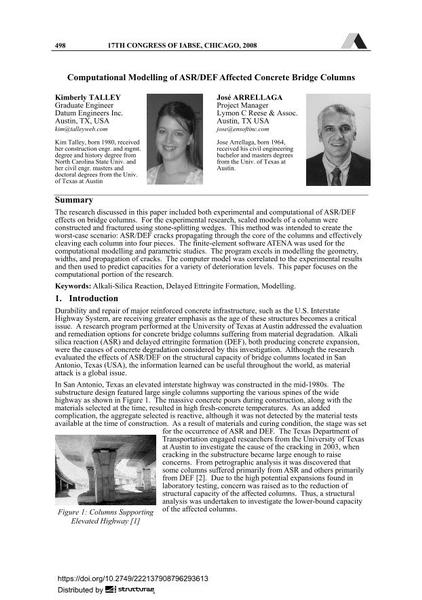Computational Modelling of ASR/DEF Affected Concrete Bridge Columns

|
|
|||||||||||
Bibliografische Angaben
| Autor(en): |
Kimberly Talley
Jose Arrellaga |
||||
|---|---|---|---|---|---|
| Medium: | Tagungsbeitrag | ||||
| Sprache(n): | Englisch | ||||
| Tagung: | 17th IABSE Congress: Creating and Renewing Urban Structures – Tall Buildings, Bridges and Infrastructure, Chicago, USA, 17-19 September 2008 | ||||
| Veröffentlicht in: | IABSE Congress Chicago 2008 | ||||
|
|||||
| Seite(n): | 498-499 | ||||
| Anzahl der Seiten (im PDF): | 6 | ||||
| Jahr: | 2008 | ||||
| DOI: | 10.2749/222137908796293613 | ||||
| Abstrakt: |
The research discussed in this paper included both experimental and computational of ASR/DEF effects on bridge columns. For the experimental research, scaled models of a column were constructed and fractured using stone-splitting wedges. This method was intended to create the worst-case scenario: ASR/DEF cracks propagating through the core of the columns and effectively cleaving each column into four pieces. The finite-element software ATENA was used for the computational modelling and parametric studies. ATENA provides advanced 3-D fracture-plastic models to simulate the nonlinear behaviour of reinforced concrete elements. The program excels in modelling the geometry, widths, and propagation of cracks. The computer model was correlated to the experimental results and then used to predict capacities for a variety of deterioration levels. This paper focuses on the computational portion of the research. |
||||
| Stichwörter: |
Modellbildung Alkali-Kieselsäure-Reaktion
|
||||
